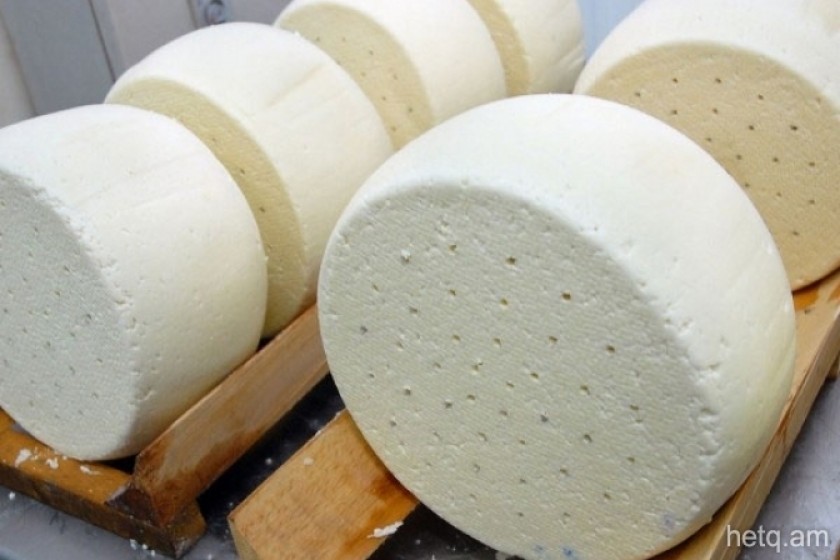
Diary Whodunit: Where Did Millions Worth of Missing Polish Cheese Exported to Armenia Wind Up?
This is a story of millions of dollars’ worth of missing Polish cheese and curds exports to Armenia.
According to data provided Hetq by Poland’s Central Statistical Service, Poland exported US$16.398 million worth of cheese and curds to Armenia in 2015.
In contrast, Armenia’s Customs Service claims that that the amount imported that year only amounted to a few thousand dollars - $32,000 worth.
In fact, according to data published by the Customs Service, Armenia only imported 1.1 million tons of cheese and curds globally, worth just $5 million.
Why such a large discrepancy? More importantly, where did all that cheese go?
First, some background.
2015 and 2016, weren’t the best of years for Armenian cheesemakers. The fall in the international price of powdered milk didn’t help. Cheese producers had a slew of complaints about the business.
Despite the anecdotal negative news, Armenia’s Customs Service claims that Armenia exported $23.6 million worth of cheese and curds in 2015; 9,100 tons to be exact. That’s 4.8 times more than was exported in 2014 in terms of worth.
What’s more than curious is that Armenia’s National Statistical Service says that domestic cheese production rose by a mere 1.5% in 2015.
98% of the cheese and curds that Armenia exports goes to Russia.
Things got noticeably better for Armenian cheesemakers in 2016. According to figures released by the Eurasian Economic Commission, Armenia exported $13.1 million worth of cheese and curds to Russia last year (5,600 tons). That’s 43.5% less, in terms of worth, than the previous year, and 38% less in terms of volume.
Data provided by the statistical services of Armenia and Poland regarding 2016 cheese and curds trade volumes also greatly differ.
A month ago, Poland’s statistical service wrote Hetq that Poland exported $7.5 million worth of cheese and curds to Armenia in the first three quarters of 2016.
Surprise, surprise – Armenia’s Customs Service claims that only $15,000 of the dairy products entered the country from Poland in the first half of 2016.
In a response to Hetq as to why the data diverges so, Armenia’s State Revenue Committee suggested that we study, in detail, the methodology used by the two countries.
“Based on a difference in methodology, it is possible for essential (objective) disparities to appear when comparing data. (In particular, import data is per the place of origin, while export data is per the destination country.) Thus, when comparing data, it is necessary to lift comparable data.” - Armenia’s State Revenue Committee
Readers will be excused for not making heads or tails of the above.
To get more clarification as why discrepancies may appear, one only has to Armenia’s National Statistical Service (NSS).
The NSS states that the reasons may be objective and subjective.
1- Discrepancy in the methodology. But this can hardly explain the great discrepancies cited above. Furthermore, the NSS, in its explanation, clearly states that all countries use UN approved definitions and to gauge external trade volumes.
2- The NSS also cited “technical” reasons. For example, there can be differences in registration dates, or, in certain cases, the exporting country’s items never reach its destination. The NSS says that the partner nation may not intentionally register the items exported or imported, whereas the other may register such goods.
3- Finally, data may be intentionally altered by one or the other trading partner. For example, an importing country may intentionally decrease the volume of goods in order to lessen customs fees. An exporter may undervalue goods sent to later use the difference to increase VAT.
This third explanation most probably refers to contraband smuggling.
Which of the above three explanations operated in terms of trade between Poland and Armenia can only be verified by the parties involved.
If it’s a case of contraband, as Armenian cheesemakers claim, then large amounts of tax were never levied on a vast amount of imported Polish cheese and curds.
Armenian cheese and curd makers say that just a fraction of the Polish exports cleared customs in Armenia. The remainder, they claim, was then exported to Russia as cheese produced in Armenia.
This, they say, explains why cheese exports from Armenia to Russia rose so dramatically in the official data from 2015-2016.
 Videos
Videos Photos
Photos




Write a comment